New faculty for 2019
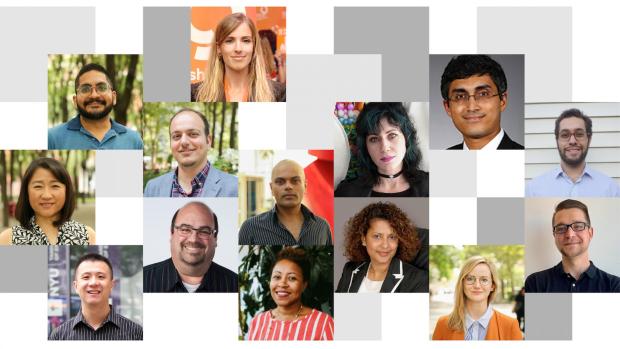
With several new faculty members now here in Brooklyn, NYU Tandon is becoming an even more dynamic and diverse place than ever. They hail from all over the world, have a wide variety of research interests, and are finding the answers to some of the most fascinating questions in the world. How can we develop more power-efficient computer architecture? What kind of digital art results when you cross Hieronymus Bosch paintings with emojis? Is it possible to model the cognitive changes that occur with aging so that clinicians can mitigate them? How do design decisions impact not just how an interface looks, but how it functions and guides our behavior? Tandon students are finding out for themselves thanks to these and other new additions to our academic community.
New Faculty:
- Victòria Alsina Burgués
- Ahmed Ansari
- S. Farokh Atashzar
- Peter DePasquale
- Vikram Duvvuri
- Kadija Ferryman
- Carla Gannis
- Chinmay Hegde
- Rajshree Hillstrom
- Xiao Ma
- Kathleen McDermott
- Christopher Musco
- Brandon Reagen
- Donghong Sun
Victòria Alsina Burgués
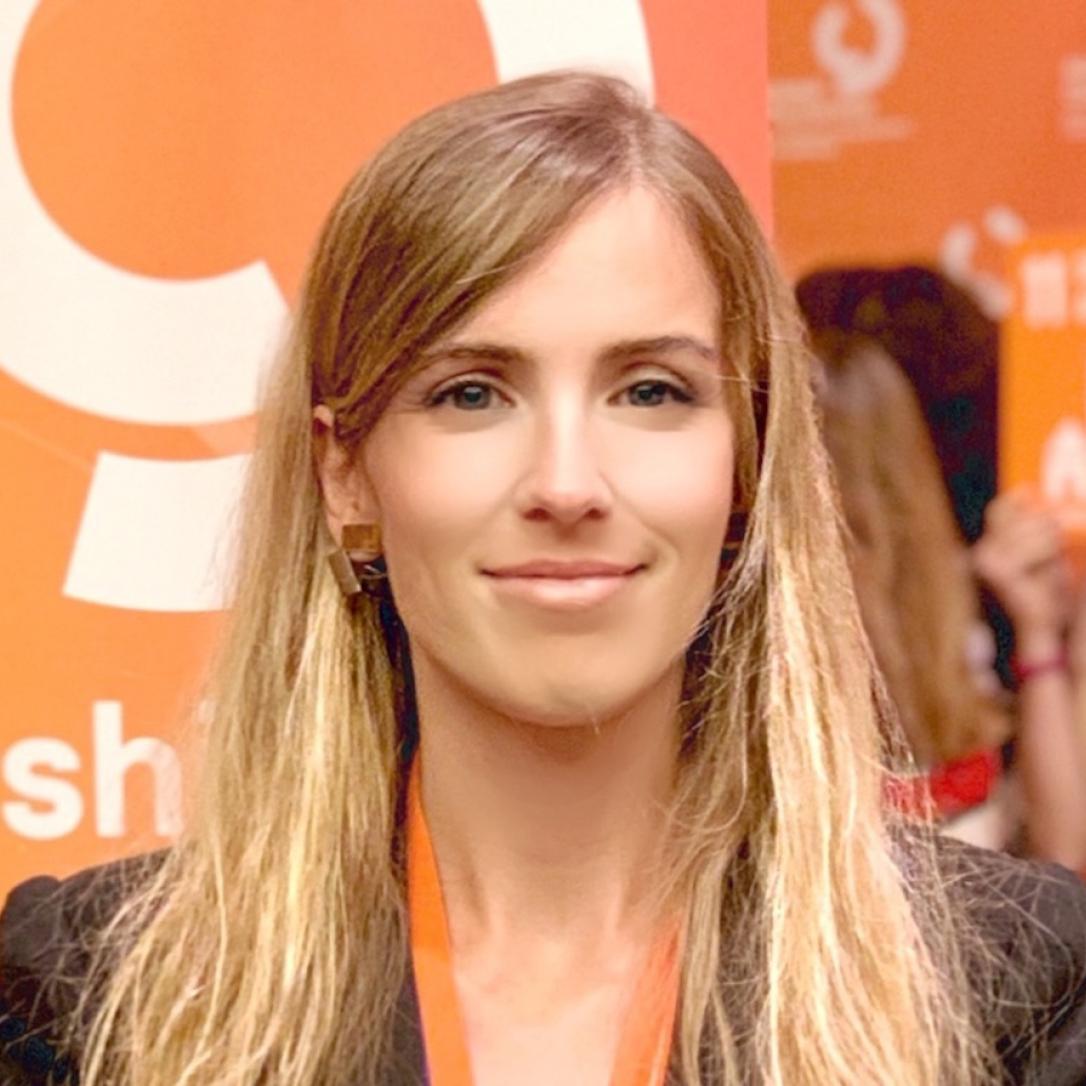
Research Areas: Data Science, Urban Systems
Researchers at Tandon’s Center for Urban Science and Progress (CUSP) have always striven to develop novel data and technology-driven solutions to the complex problems facing the world’s cities. Victòria Alsina Burgués, an Industry Assistant Professor and the Center’s new Academic Director, believes that improving urban systems and quality of life can best be accomplished by working closely with public institutions and with residents themselves.
A Senior Fellow at Tandon’s Governance Lab (The GovLab) and long a proponent of the idea that collaboration and citizen engagement can change the way we govern, she plans to bring that mindset to CUSP. “We’ll start with a major real-world problem facing cities, and hopefully our work will result in research advances and implementable policy innovations,” she says. “Some of the strategic lines I envision pursuing are how to combine big data with the collective intelligence of the crowd; how to democratize the use of big data; how to ensure socio-economic human rights; how to deal with the challenges of a rapidly aging population; and how to encourage not just ‘smart’ cities but ‘sharing’ cities.”
Alsina was formerly also a Research Professor in Tandon’s Department of Technology, Culture and Society, where she taught a course titled “Collaborative and Participatory Strategies for Sustainable Cities,” which examined the big ideas, key debates, policies, and tools relevant to helping cities address the issues framed in the U.N.’s 17 Sustainable Development Goals. She is perhaps most celebrated in the Tandon community, however, for her work on CrowdLaw, a GovLab initiative that uses technology to draw on the intelligence and expertise of the public to improve the quality of law and policymaking by inviting ordinary people to help identify problems, draft proposals, and implement and evaluate solutions. That initiative garnered her a prestigious Marie Skłodowska-Curie Individual Fellowship from the European Commission, a laurel that affirmed the value and possibilities of collaborative governance and citizen engagement, which will now be a focus of new CUSP course offerings. “You can take a top-down approach that emphasizes technology and engineering or a bottom-up approach that calls upon the social sciences,” Alsina — who once served as the Head of the Delegation of the Government of Catalonia to the United States of America and Canada — says, “but the most effective approach involves a combination of both.”
Since 2014 Alsina — who holds a B.A. in Political Science and Public Administration from Universitat Pompeu Fabra, an MPA from Universitat Autònoma de Barcelona, an M.A. in Public Leadership from ESADE Business School, and a Ph.D. in Political and Social Sciences from Universitat Pompeu Fabra — has been affiliated with Harvard’s Kennedy School of Government, serving as a Democracy Fellow at its Ash Center for Democratic Governance and Innovation, a Fellow at its Mossavar-Rahmani Center for Business and Government, and an Associate at its Belfer Center for Science and International Affairs, and she is eager to build research bridges between those organizations and Tandon. She knows that it is unusual for someone of her background to be ensconced at an engineering school. “There’s a synergy between the social sciences and engineering that can transform the world,” she asserts. “I’m looking forward to helping CUSP students explore that.”
Ahmed Ansari
Research Area: Emerging Media
Ahmed Ansari, a new Industry Assistant Professor in Tandon's Integrated Digital Media (IDM) program, has always been troubled by design courses that neglect cultural context. “You can’t simply develop a product in Silicon Valley and expect it to be a success when you roll it out in Brazil,” he explains. “People think about things differently in different locales, so when we think about design, we must also be thinking about the influence of class, race, and culture, and their ethical and political implications on technology use.” (He uses the term “cosmology” to convey the encompassing nature of his field of study.)
“I’m always interested in socio-technical landscapes and the ethics of designing”, Ansari says. “You have to consider design and technology in relation to issues of social justice. There are many things we can build, but we must also think about whether or not we should be building them. Will we be leaving anyone out? How are we changing people’s practices and desires?” He gives as one example kitchen appliances, which in past decades were routinely designed by men, with no input from the women who would be their main users. Another eye-opening example stemmed from an effort by development programs in South Asia to install Western-style toilets in every village — an effort that failed miserably when the villagers displayed little interest in adapting to the new facilities the way the designers wanted. “Technical homogeneity is also simply not sustainable,” he explains. “Designers must adapt to the specificities of the local.”
Ansari — who holds a BDes in Communication Design from the Indus Valley School of Art & Architecture (IVSAA), in Karachi, Pakistan (2008), and an MDes in Interaction Design (2013) and Ph.D. in Design Studies (2019) from Carnegie Mellon University — works at the junction between design history and theory, critical cultural studies, and the philosophy of technology, and he is one of the founders of the Decolonizing Design platform, which seeks to give recognition and a voice to scholars from groups underrepresented in the design and technology community and raise awareness about the need for inclusivity and plurality.
His students will be called upon to leverage a combination of rigorous ethnographic research, critical thinking, and hard tech skills, a blend that Ansari — who began his career as an interaction and graphics designer at various consultancies in Pakistan, and later served as a researcher at the California-based Delphi Labs, working on autonomous public rapid transit and ride-sharing — has found particularly gratifying in his own work.
His Tandon class this fall, Designing Other Worlds, will require participants to imagine the realities and perspectives of people and beings unlike themselves, creating artifacts and interactions that aim to foster cross-species and cross-cultural understanding and empathy. “They can use 3D printing, found objects, digital media, or whatever sparks their imaginations,” Ansari, a longtime fan of world-building in science fiction and fantasy, says. “I’m open to all sorts of compelling outcomes.”
S. Farokh Atashzar
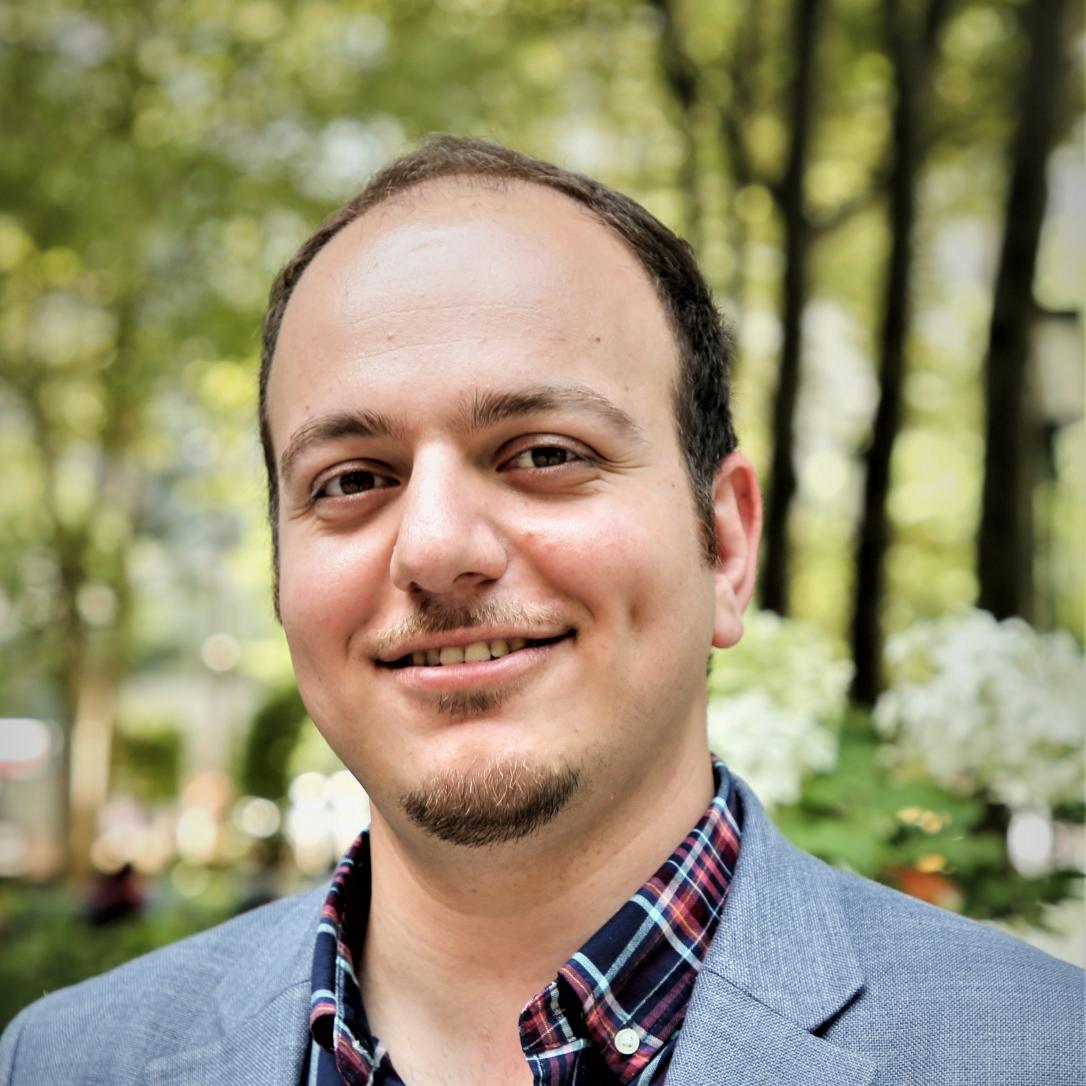
Research Areas: Data Science, Health, Robotics
S. Farokh Atashzar’s work is dedicated to developing intelligent, interactive robotic systems that can augment human sensorimotor capabilities and allow people to go beyond natural competences and overcome physiological and pathological barriers.
“Consider surgeons,” he explains. “They obviously have developed very fine sensorimotor skills for conducting delicate surgeries. However, with the use of robotic systems deployed in the operating rooms and controlled by surgeons, it is now possible to make procedures even safer, more accurate, and consistent. Sensorized robots inserted through small incisions inside a patient’s body and registered with intraoperative and preoperative images (such as CT scans) can augment surgeons’ perceptual abilities regarding the surgical sites while boosting the movement accuracies. It can scale up perceptual modalities (such as vision and haptics) and scale down and filter surgeons hand motions toward an ultimate precision.” He continued, “There is significant potential in the investment of research and development resources on this topic. With the use of telerobots, we can potentially allow surgeons to operate from remote locations, which is a real boon to patients in underserved areas around the globe. Fusing robots with artificial intelligence, we can envision the realization of shared surgical autonomy in large scales, where the surgical tasks can be shared between smart robotic architectures and surgeons. This has the potential to revolutionize the quality of outcomes, minimize surgical errors, and guarantee consistent performance. Significant progress regarding the topic of shared autonomy has already been achieved, for interacting with rigid tissues (such as during orthopedic surgeries), but there is a lot more work to do, to exploit the full potential of smart sensorized robotic systems.” (Atashzar has published two book chapters on topics related to teleoperated robotic surgery and sensorimotor augmentation of surgeons using smart robots, one of which was published in encyclopedia of medical robotics.)
Robotics can also be used for neurorehabilitative and assistive purposes, to help individuals living with disabilities in regaining sensorimotor functionalities lost due to a neurological or musculoskeletal condition, he explains. Atashzar, who will be connected to both Tandon’s Department of Electrical and Computer Engineering and its Department of Mechanical and Aerospace Engineering, says: “We’re working on wearable technology, like exoskeletons, and bionic prostheses that can understand an individual’s motor intentions with a superior spatiotemporal resolution and act upon them thanks to advanced machine learning algorithms and state-of-the-art non-invasive neuromuscular imaging and recording technologies (such as high-density electromyography and electroencephalography). It is now possible to decompose neuromuscular recordings into the activities of individual motoneurons and fuse the robotic limbs and bionic orthoses/prostheses with the biomechanics of individuals in a safe and stable manner to combat disabilities.”
He believes that when we aim for connecting robots with the human body (not just connecting to), we can, in fact, mobilize decades of technological advancements towards re-mobilizing disabled individuals. He says: “When we can design and implement autonomous cars that can communicate, act, and react in a fraction of a second and when we can program artificial intelligence in Mars rovers to function in a totally unstructured environment millions of miles from home, we should be able to take advantage of all these components to help people regain their lost functionality, maximizing their independence and enhancing the quality of lives of millions of people using assistive and neurorehabilitative technologies. Let us not forget that our society is aging, and it is aging fast, which has resulted in a significant rise in the population of people in need of this technology. Just one example of many is the stroke, which affects about 15 million people each year worldwide according to the World Health Organization.”
Atashzar has served as the lead guest editor for two special issues, “Intelligent Human-Robot Interaction for Rehabilitation and Physical Assistance,” in IEEE Robotics and Automation Letters, and “Autonomy and Intelligence in Neurorehabilitation Robotic and Prosthetic Technologies," in the Journal of Medical Robotics Research; he is the publication co-chair of the 2020 International Symposium on Medical Robotics and has served in multiple organizations and chairing committees of symposia and workshops related to intelligent medical robotics.
He is eager to collaborate with researchers at NYU Langone on theoretical, practical and clinical aspects of medical robotic technologies and interactive intelligent systems. His work has far been featured in more than 25 journal papers, 30 peer-reviewed conference papers, and 2 book chapters, and as the head of NYU’s Medical Robotics and Interactive Intelligent Technologies (MERIIT) Laboratory, he is looking forward to making continued research breakthroughs. “Intelligent and interactive robotic technology has so much potential to enhance the quality of care, and it’s imperative that we explore ways it can be used to improve life and longevity,” he asserts.
Vikram Duvvuri
“Physics provides a unique, powerful, and profoundly useful picture of the world, which is also foundational,” Vikram Duvvuri says. “There is no aspect of engineering that doesn’t call upon physics for explanation, if not prediction. You’ll find examples within 20 meters of wherever you’re at—buildings, bridges, the blue (actually violet) sky, vision, wi-fi, computation, and of course, the space and time within which these systems and processes are embedded. I try to convey this to my students, adding that physics was invented by humans for human comprehension and benefit.”
Duvvuri had developed an interest in astrophysics as a child in his native India, thanks in part to the excitement surrounding Subrahmanyan Chandrasekhar, whose pre-War work on the so-called white dwarf mystery and stellar death, done on a steamship from colonial Madras to Southampton, at the age of 19, won him recognition, very late in his life, and ultimately the 1983 Nobel Prize in Physics.
The newest lecturer in the Department of Applied Physics, Duvvuri has focused much of his work on gravitational theory, serving as a research assistant at the Enrico Fermi Institute while earning his Ph.D. in theoretical physics from the University of Chicago and conducting postdoctoral research at the Instituto Superior Técnico’s Center for Particle Theory, in Lisbon. His accomplishments include initiating the use of modified-gravity as an alternative to dark-energy. One of the scholarly papers he wrote as a graduate student has been cited more than 2,000 times and covered in such outlets as the New York Times and Nature.
“Theoretical physics is compelling, so discussing phenomena like black holes tends to be rather fun,” he says, “but my purpose is to give Tandon students the knowledge they need to understand how and why the physical world works and to transform the way they understand engineering, if not the world.”
Duvvuri – who has held lectureships at Princeton and Washington University, taught in the mathematics department at Rutgers, and was an Assistant Professor of Physics at BHSEC Queens – finds great satisfaction in being in the classroom. “Humans grapple with and ultimately learn physics,” he says. “This is a dazzling natural phenomenon. Observing and facilitating this sort of thing, even in a small way, is an absolute privilege.”
“Most physicists measure things, and the outcomes of processes, by habit, if not compulsion. These measurements need to be repeatable and validated by statistical theory," he continues. "There’s no reason to resist our impulse to behave this way when it comes to pedagogy. In fact, physicists are now, with the help of modern data collection and analysis apparatii, helping transform classroom teaching across university curricula. Much of this ancient knowledge by now (i.e., almost 30 years old). In my career, I have focused on turning this knowledge into information—how do we build learning environments based on this knowledge, and verify, continuously, that we are on the right track? I have been helping physics departments take advantage of these developments during the last couple of years. It’s an exciting time to be teaching physics, especially at Tandon!”
Peter DePasquale
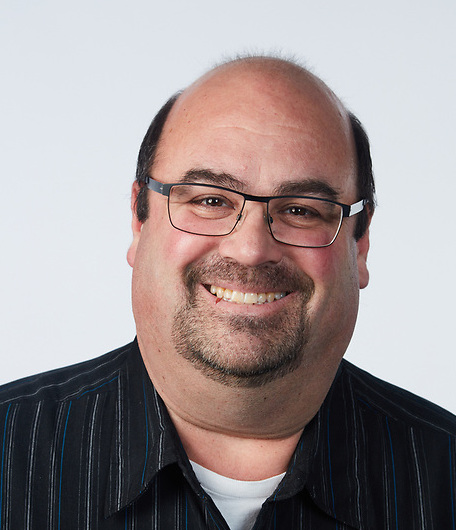
Peter DePasquale remembers the thrill of using an Apple II 8-bit computer for the first time at summer camp. He was so excited about learning to write programs in BASIC that his parents bought him his own machine and provided a subscription to a monthly magazine that contained code for rudimentary tools and games.
DePasquale, a new industry associate professor in the Department of Computer Science and Engineering, hopes that the students in his introductory programming course will be similarly excited to delve into the topic.
A classroom veteran who has taught at such schools as Villanova, Virginia Polytechnic, the University of Pennsylvania, and The College of New Jersey, he is known for his approachability and dedication. (At The College of New Jersey, for example, he negotiated a private donation of some 300 computers, and working alongside his students on nights and weekends, he helped set up a high performance computing cluster; he also spearheaded hackathons and oversaw the internship-for-credit program there.)
A father of six, he has had educational struggles in the past that make him especially empathetic. “I began my undergraduate years studying electric engineering on the advice of some family friends and found myself getting terrible grades and becoming increasingly unhappy,” he recalls. “Luckily, the computer science department welcomed me with open arms, and I got back on track.”
DePasquale — whose areas of interest include cloud computing, Internet-based software development, collaborative environments, telerobotic control/interfaces, distributed systems, and computer science education — enjoyed a long career as a software developer at such companies as Sonalysts, IBM, Apex Systems, and Integral Ad Science before coming to the realization that he much preferred shepherding students through the learning process to shepherding software products to the marketplace. “You can make an impact working in private industry, but you make an even greater impact teaching the next generation,” he says. “Keeping in touch with my former students and hearing about how they’re doing is one of my greatest satisfactions.”
Kadija Ferryman
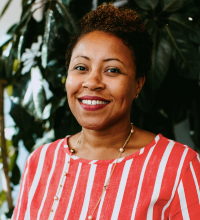
Research Area: Health
When Kadija Ferryman arrived at Yale as an 18-year-old undergraduate, she knew only that she wanted to embark on a course of study involving medicine in some way. Seeking direction, she consulted what was known informally as the “Blue Book,” a catalog of the roughly 2,000 courses available at the school, and was intrigued to see an offering focused on the anthropology of medicine. “It opened my eyes to the concept that disease has cultural causes and implications, and that human design, beliefs, and values all play a role,” she says. “That set me on the path to degrees in Cultural Anthropology and a focus on the social, cultural, and ethical dimensions of health information technologies.”
A new Industry Assistant Professor of Technology, Culture and Society at Tandon, Ferryman now examines the impacts of health risk prediction technologies as they relate to marginalized groups. “When I first entered graduate school, there was a lot of excitement, even among laypeople, about the Human Genome Project and the possibility of identifying and mapping every gene,” she recalls. “And while that excitement and sense of hope was warranted, I also realize that we need to be aware of the pitfalls of having that type of data. How should physicians use the information? What ethical considerations are involved?”
As the use of big data and electronic health records became increasingly prevalent in the medical field, Ferryman found ample avenues to explore. As a postdoctoral scholar and researcher at the Data & Society Research Institute in New York, for example, she led the Fairness in Precision Medicine research study, which examined the potential for bias and discrimination in predictive precision medicine. (Precision medicine eschews a one-size-fits-all approach to treatment and instead takes into account a patient’s genes, environment, and lifestyle.)
Ferryman, who has authored numerous papers for such publications as the Journal of Health Care for the Poor and Underserved, European Journal of Human Genetics, and Genetics in Medicine, recently completed a highly competitive Mozilla Fellowship, spending a year studying how health information technologies can address health disparities, and she currently serves as a member of the Institutional Review Board for the National Institute of Health’s All of Us Research Program, a precision medicine study that is on track to be the world’s largest such project.
As an anthropologist, she is excited about the possibilities for cross-disciplinary collaboration that NYU presents, and she is enthusiastic about teaching ethics-focused courses at Tandon. “Tandon students want to use their engineering knowledge and skills to change the world, and ethics should be an important part of their design and development processes right from the start,” Ferryman says. “Technology is not separate from society; it is a product of society and it impacts society.”
Carla Gannis

Research Area: Emerging Media
To visit Carla Gannis’s website is to become immersed in a world of riotous color and movement — a veritable carnival of drawings, animated GIFs, 3D-printed sculptures, augmented reality experiences, and much more.
She explains that in her artistic practice, she takes a horror vacui approach, abjuring empty spaces, and she culls inspiration from a wide variety of sources, including networked communication, art and literary history, emerging technologies, and speculative fiction. “We now take in so much media — and at such a rapid rate,” she says. “My work is inspired by that phenomenon, but at the same time, it’s also a critique.”
Gannis has spoken and exhibited her pieces at such august institutions as the Whitney Museum of American Art, Hudson River Museum, Metropolitan Museum of Art, and Hermitage Museum, and her work has appeared in such major outlets as Wired, FastCo, the Wall Street Journal, the New York Times, and the Los Angeles Times.
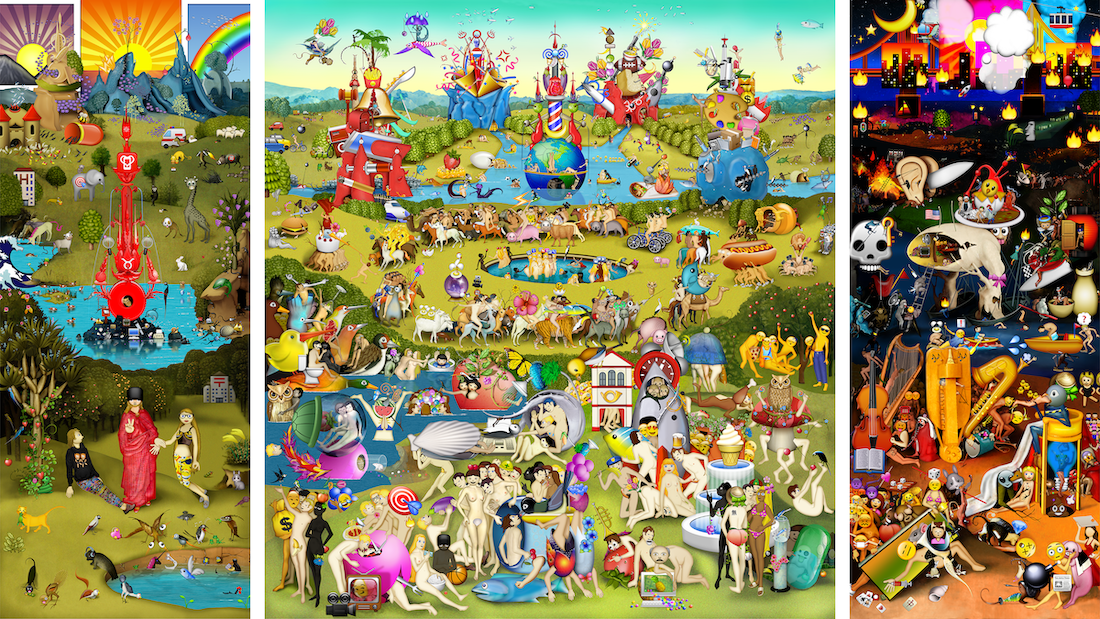
A new industry professor in Tandon's Integrated Digital Media (IDM) program, she will be teaching an undergraduate prototyping course, as well as a graduate-level course on virtual reality that she’s named in honor of Ivan Sutherland, widely considered the father of computer graphics, who wrote a seminal 1965 essay titled “The Ultimate Display,” in which he describes “a room within which the computer can control the existence of matter .... With appropriate programming such a display could literally be the Wonderland into which Alice walked.”
Gannis — who served as the assistant chair and an assistant professor in the Department of Digital Arts at Pratt Institute before joining the Tandon faculty — expects the graduate course to provide historical context for current work in VR, a look at the theoretical applications of the field, discussions of its implications, and new ways of looking at a project from different perspectives. “It won’t be just sitting and listening to lectures.” she stresses. “Students will definitely get their virtual hands dirty.” She hopes they’ll have fun while doing so. “I think it’s possible to approach a project with both seriousness and a sense of enjoyment,” she asserts.
She exhibits the same passion and enthusiasm for teaching as she does for creating her own art. “I’ve been an advisor and educator for several years, and my door is, quite literally, always open to my students,” she says. Gannis remembers her own student days with a small measure of rue. “My father worked in computer graphics, so I rebelled and studied classical painting,” she recalls. “I’m glad that he set out a path for me, though, and I did ultimately come around.”
Chinmay Hegde
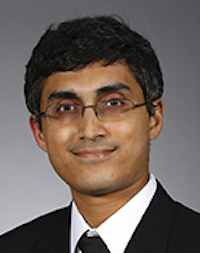
Research Area: Data Science
A native of India, Chinmay Hegde has lived in places around the world, including Houston, Texas; where he spent several years as a student at Rice University; Cambridge, Massachusetts, where he did post-doctoral work in MIT’s Theory of Computation (TOC) group; and Ames, Iowa, where he held a professorship in the Electrical and Computer Engineering Department at Iowa State University.
He is looking forward to settling down in New York City, however — not least because of its sports scene. “I’m excited to be working not far from the Barclays Center,” Hegde, who will be an assistant professor in Tandon’s Department of Computer Science and Engineering and Department of Electrical and Computer Engineering, says. “I hope to see many games there, as well as at Madison Square Garden and Citi Field.”
A bigger attraction, of course, is the chance to work in one of the country’s major hubs of technology and innovation. Hegde, whose area of expertise is in data processing and machine learning, focuses his research on developing fast, robust, and certifiable algorithms for diverse data processing problems encountered in applications spanning imaging and computer vision, transportation, and materials design. “Within the area of healthcare, for example, we are developing ways to model the cognitive changes that occur with aging so that clinicians can mitigate them,” he explains. “In the realm of transportation analytics, we can use data to predict and improve congestion or prevent accidents, and we are also working on security issues, making autonomous vehicle systems more impervious to hacking.”
Hegde is also involved in developing theoretical analysis tools that can help researchers measure how well their algorithms are working. But don’t let the mention of theoretical analysis fool you. “My machine learning classes will be very practical and hands-on,” he says. “I strongly believe the only way to learn is by diving in and working with data.”
Rajshree Hillstrom
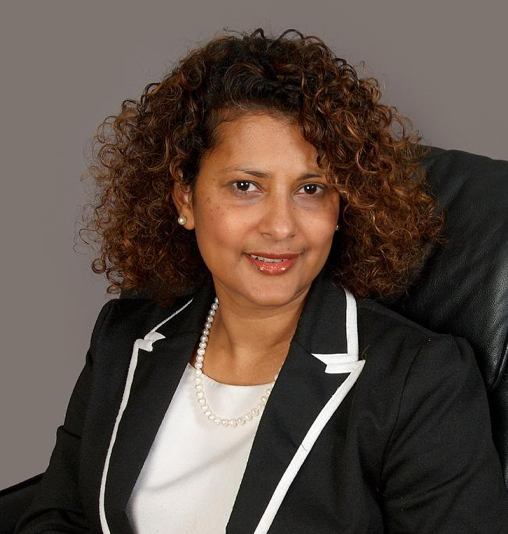
Research Area: Health
According to the Arthritis Foundation, an estimated 31 million Americans suffer from osteoarthritis, a condition in which cartilage — the compliant slippery surface on the ends of bones — wears away, causing debilitating pain and stiffness. The most frequent cause of disability and work loss in the nation, osteoarthritis costs the U.S. economy more than $100 billion annually by conservative estimate.
Industry Professor of Biomedical Engineering Rajshree Hillstrom has devoted her career to studying possible solutions. “At the early stages of osteoarthritis, clinicians treat patients with oral medications like nonsteroidal anti-inflammatory drugs (NSAIDs), and during the very late stage, when bone rubs on bone because of severe cartilage loss, total joint replacement surgery is an option,” she explains. “We need, however, to find better ways to treat patients in the moderate stage, when oral medications aren’t enough but invasive surgery is too drastic an option.”
To that end, Hillstrom — who is also connected to the Department of Biomedical Engineering — creates computational simulations that allow her to determine how much pressure is being placed upon a joint and to evaluate various surgical reconstruction techniques and medical devices, including a noninvasive implant now in clinical trials that is anchored subcutaneously with screws, leaving ligaments intact.
A native of Mauritius, an island nation and holiday destination in the Indian Ocean, Hillstrom holds a bachelor’s degree (1991) and a master’s degree (1993) in mechanical engineering from the University of Mauritius. Seeking to combine her engineering pursuits and her desire to make contributions to the medical field, she next earned a Ph.D. in bioengineering (2001) from Anglia Ruskin University, in Chelmsford, England. “There were few Ph.D. programs in my areas of interest in Mauritius, so I was thrilled to win a scholarship to conduct my doctoral studies in England,” she recalls. “I completed a thesis on hip replacement and was the first student at the school to earn a Ph.D. in bioengineering.”
Hillstrom, who also earned an MBA (2005) and a Postgraduate Diploma in Teaching and Learning (2008) from Anglia Ruskin, as well as a senior fellowship at the U.K.’s Higher Education Academy, has published over 30 scientific papers and over 100 scientific abstracts and has one patent, four book chapters, and one book to her credit. In addition to evaluating new medical devices that could alleviate the suffering of millions of patients, she is also engaged in developing and validating computational models of reconstructed joints to predict improved surgical fixation techniques and conducts movement analysis to obtain quantitative measurements of body motion and joint loading during different functional activities, working closely with surgeons. (In her previous post, as director of the Medical Engineering Research Group at Anglia Ruskin, she developed an in vitro testing laboratory, which included the first six-degree-of-freedom joint simulator owned by a British university, as well as a movement analysis laboratory, based on an innovative facility at New York City’s Hospital for Special Surgery.)
She is eager to begin working with Tandon students in Brooklyn. “It’s gratifying to impart knowledge that has great practical application,” she says. “We’ll be focused on activities that can be translated from the lab bench to the patient bedside.”
Xiao Ma
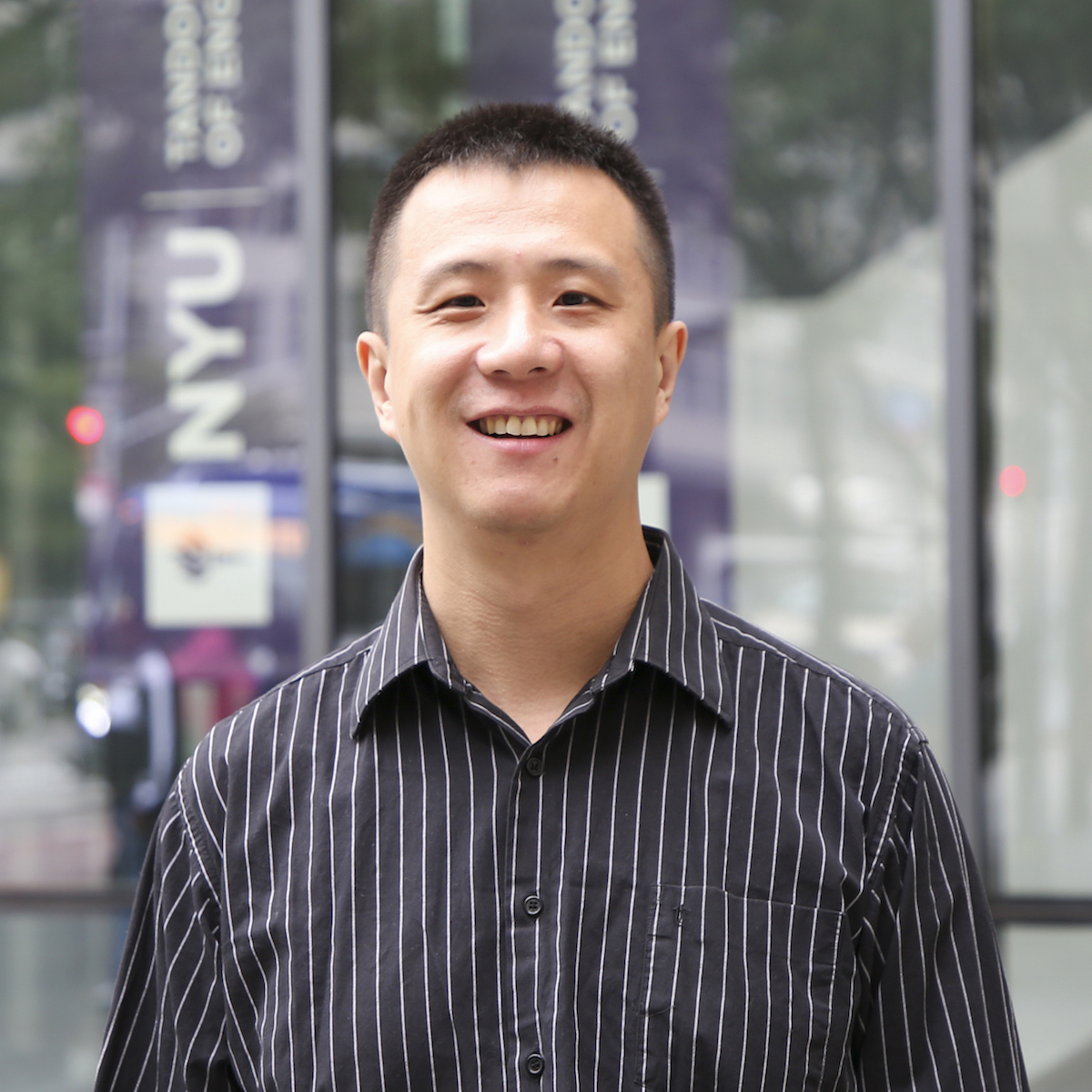
Research Areas: Health
Xiao Ma grew up in Beijing and earned his bachelor’s and master’s degrees in mechanical engineering from the highly regarded Tsinghua University. Although Beijing is a bustling cultural and economic capital, when the time came to consider doctoral programs, Ma decided to seek intriguing challenges to develop his professional career and broaden his horizons. “It occurred to me that I was in my mid-20s and had never left my hometown,” he recalls. “I was ready to look for broader academic, professional, and cultural diversity.”
Accepted to a Ph.D. program with fellowship support in mechanical engineering at Iowa State University, in Ames, he found a stimulating new academic milieu there, minoring in applied mathematics and exploring the possibilities of using his mechanical engineering skills in the study of biological systems. “I began working at the molecular level, seeing how proteins and DNA interact and their role in phenomenon like blood coagulation,” he explains. “I also developed a proof of concept smart bio-interface involving the application of electrical stimuli to actuate and modulate the binding behavior of biomolecules.”
Of that peaceful and lovely place, he says, “Ames is often listed as among the best small towns in America to live, and I found that reputation to be accurate. It was a neat, friendly environment, and as it turned out, I met my future wife there, so that has contributed a lot to my fond memories of Iowa.”
After he completed his doctoral dissertation on the electrostatic actuation based modulation of conformation and force interaction for biomolecules and monolayer thin films, Ma was invited to conduct post-doctoral research at the University of Texas Southwestern Medical Center, in Dallas, where he studied cell migration, morphogenesis, and the underlying molecular signaling regulation.
His work there in such areas as mechanobiology, cellular morphodynamics, signaling pathways, live cell imaging, and biosensing was stellar preparation for his latest post: Industry Assistant Professor in the Department of Biomedical Engineering at NYU Tandon.
"Biomedical engineering brings together people from so many disciplines, such as a mechanical engineer like me, chemical engineers, physicists, electrical engineers, and clinicians, which makes it an exciting field to work in,” he says. “You could probably call this my dream job, because it’s dedicated to biomedical science and engineering research with fascinating challenges and opportunities, especially considering that my new colleagues include people I am highly looking forward to collaborating with.”
Ma is teaching anatomy, physiology, and biophysics, one of the core courses offered by the BME department; a special-topics course in medical engineering problems that will provide an opportunity for students to complete a hands-on project; and a seminar in BME course offering students a chance to present their own research progress. He and his wife, an assistant professor at CUNY’s Baruch College, are happily settling in together with their new lives and academic jobs in the New York City — and, most importantly, their challenging new roles as parents to their first child.
Kathleen McDermott
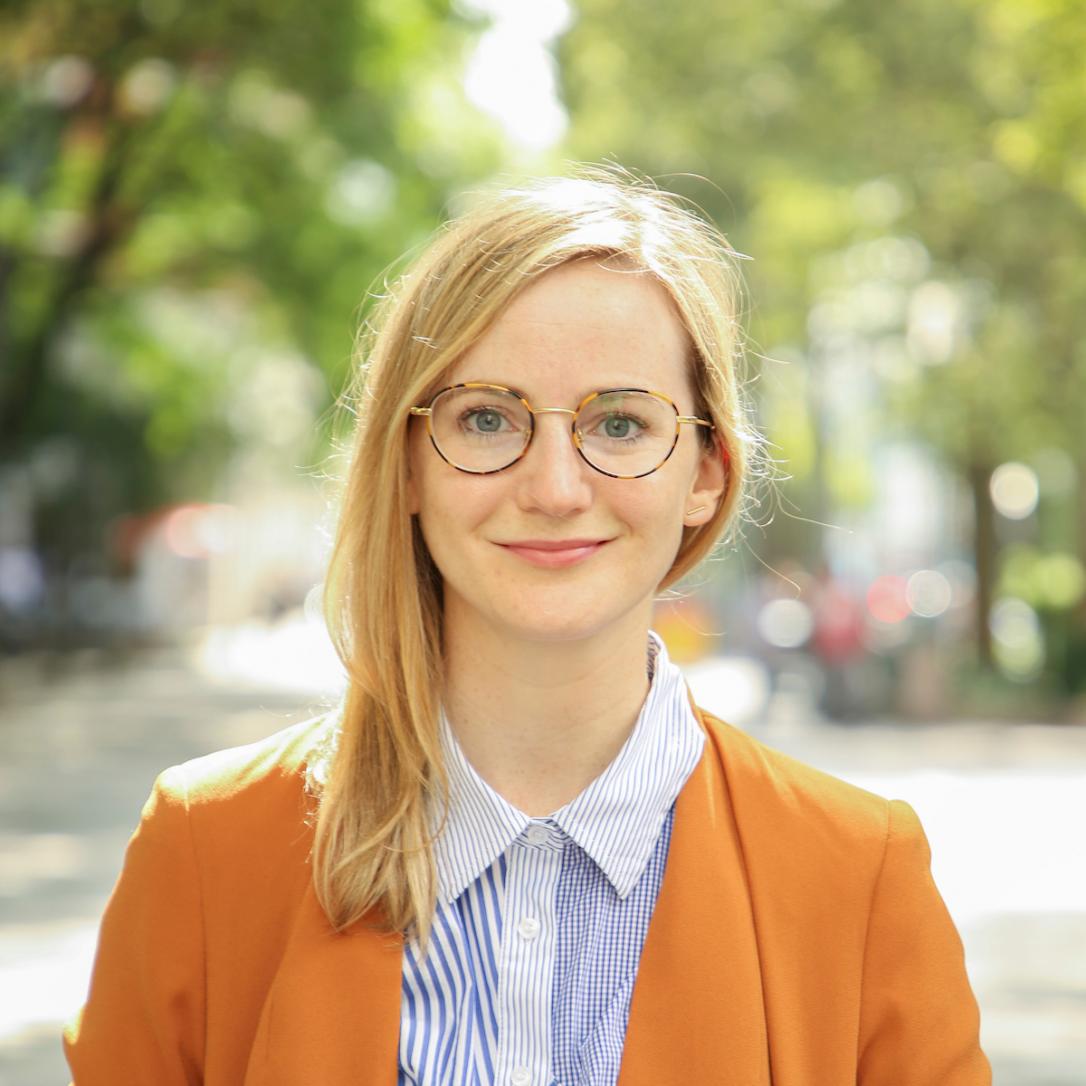
Research Area: Emerging Media
“I often use the example of a toaster to illustrate the fact that technology is not just engineered but designed,” says Kathleen McDermott, a new Industry Assistant Professor in Tandon’s Integrated Digital Media (IDM) program. “Conventionally, to make a toaster, an engineer will design the heating element, and an industrial designer will create the ‘skin’ that goes over it. Both processes are important and influence each other. However, when technology is involved, we often become blind to the plethora of design decisions that impact not just how an interface looks, but how it functions and guides our behavior. I like to remind students that the technologies they are surrounded by are a result of decisions — many of them design decisions — so that they may feel empowered to question those processes.”
McDermott, who taught at Tandon last semester as a visiting professor, hopes to encourage IDM participants, which attracts students with a combination of technical savvy and design skills, to dive into their projects with a degree of fearlessness. “The engineering side of them tells them to be painstaking and cautious, and they don’t want to take risks. But aspiring designers need to exhibit their work in progress and take creative chances in order to grow. It is important for students to be constantly designing and making, to strengthen their creative skills.”
She is planning a spring course on the design of domestic electronics titled, “Living with Robots,” which will include a critical consideration of the ramifications of the Internet of Things (IoT), along with hands-on design work. In the ideation and prototyping class she is teaching this fall, students will have the opportunity to work on individual projects they feel passionate about, and to improve their ability to give and receive feedback in critique. McDermott realizes that inviting feedback from others — especially about a passion project — can make anyone feel vulnerable. She, herself, has felt that way when showing her own work, which uses a combination of textiles, sculptural materials, and open-source electronics to create mechanical objects that critically explore the relationship between human bodies and technology, in both real and imagined scenarios. Although it can be challenging, McDermott enjoys the opportunity to participate in a larger public dialogue through her work. Many of her projects make strong societal statements (a dress that expands to ensure that the wearer has ample personal space, for example, or a scarf with a built-in sensor that automatically covers the wearer’s face in the presence of pollutants such as car exhaust), and McDermott encourages students to explore issues that are important to them in their own work. “NYU has very avid and engaged students, so it’s a pleasure to see what they care about and what they come up with,” she says.
Christopher Musco
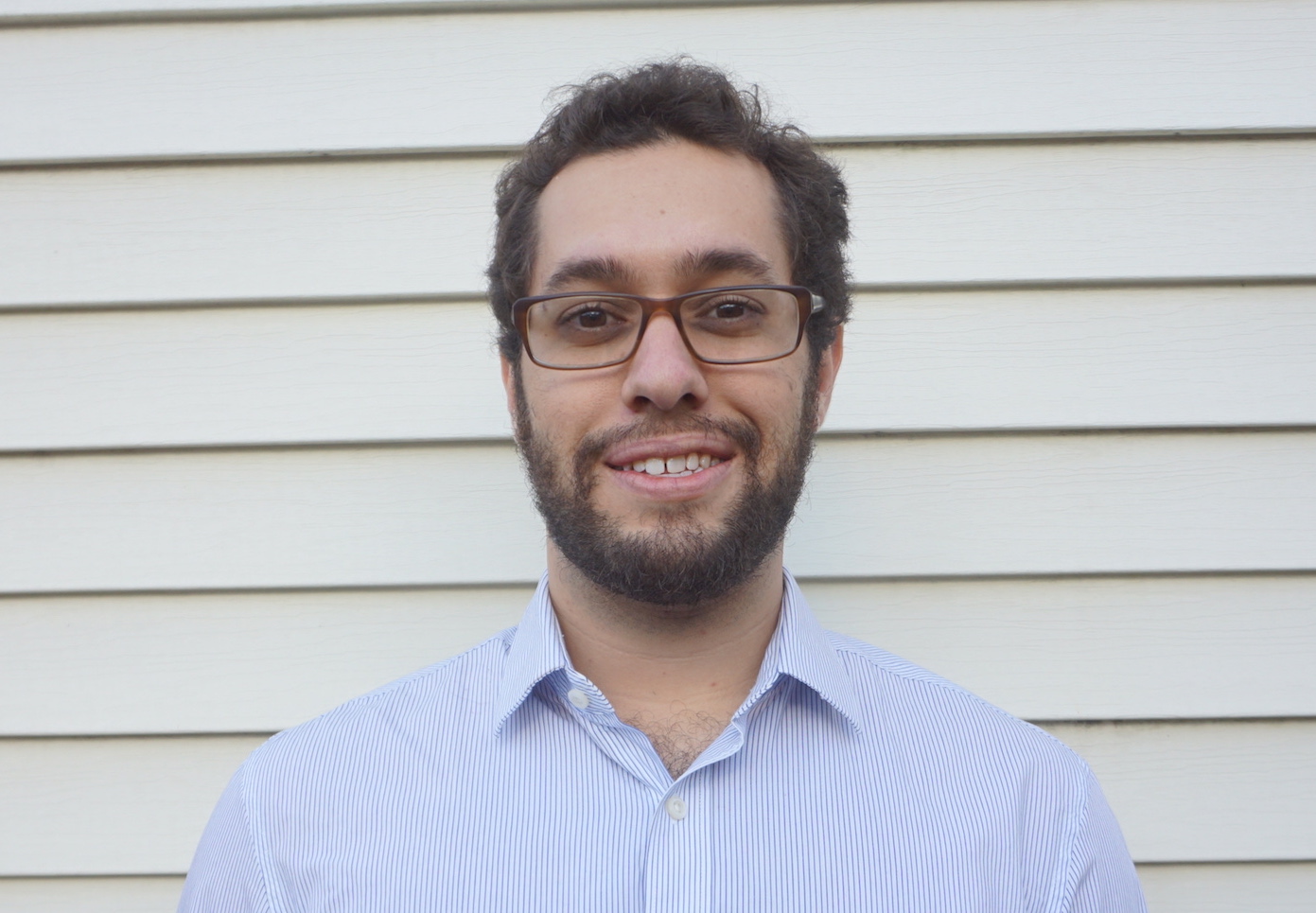
Christopher Musco, a new assistant professor in the Department of Computer Science and Engineering, has a doppelganger — his twin brother, Cameron, who shares much of the same educational background (undergraduate degree from Yale and doctorate from MIT) and software-development experience (stints at a series of startups). They have also authored papers together and are both concurrently embarking on tenure-track careers (Christopher here in Brooklyn and Cameron at the University of Massachusetts Amherst). It’s easy to imagine that set of circumstances as the basis for one of those identity-switching comedies like The Parent Trap.
The Hollywood films that come more readily to mind when hearing about Musco’s research, however, are those like Hidden Figures or Goodwill Hunting, in which brilliant mathematicians solve problems that have confounded others or that have enormous practical application. His work tackles a central challenge of data science, he explains: “With data volume recognized as a primary factor behind advances in machine learning and data-driven discovery, how do we scale statistical methods to take advantage of our largest datasets?” His goal is to build algorithmic tools that will profoundly shift how data scientists solve fundamental problems and bring effective techniques to scale so that they have the widest possible applicability. “To me there is nothing more exciting than learning a theoretical or mathematical concept that transforms how I view a real-world problem,” he says, “and I want to share that joy through my research and teaching.”
Musco, a native of Rhode Island, grew up with a love for hands-on engineering, restoring classic cars with his grandfather, including a Volkswagen Beetle and an Alfa Romeo. As a teen, he also designed and built his own skis, some of which he still uses today. While he initially considered studying mechanical engineering or architecture, after first experiencing the intertwined joys of math and computing as an undergraduate, he never looked back. Given his wide-ranging interests and enthusiasm for pursuits both scholarly and otherwise, it’s tempting to reach for another cinematic reference and characterize him as A Man for All Seasons.
Brandon Reagen

Research Area: Data Science
Assistant Professor of Electrical and Computer Engineering Brandon Reagen still sometimes marvels at just how many things have to go right when we sit down at a computer and how many individual electrical signals must be coordinated for today’s chips, which constitute billions of transistors, to process the ever-expanding mass of information passing through digital systems.
“Despite the great strides computing performance has made since its beginning, the industry has now hit something of a wall,” he explains. “It is no longer sufficient for computer designers to think just about organizing transistors for performance but also for power and energy efficiency. The devices of modern computing systems are now physically constrained by power dissipation to the point that the only way to build faster processors is to propose more power-efficient designs. This makes it a very exciting time to work in computer architecture, as many of the techniques proposed over the last decade need to be rethought; we can’t keep doing what we’re doing and expect to meet new challenges.”
Reagen — who earned a doctoral degree in computer science from Harvard in 2018 and undergraduate degrees in computer systems engineering and applied mathematics from the University of Massachusetts, Amherst, in 2012 — focuses on creating specialized hardware accelerators for applications like deep learning. He believes the future of computing depends on these accelerators as the specialized hardware can be made orders of magnitude more efficient than general-purpose platforms like CPUs. Enabling accelerators requires changes to the entire compute stack, and to bring about this change, he has made several contributions to lowering the barrier of using accelerators as general architectural constructs, including benchmarking, simulation infrastructure, and System on a Chip (SoC) design.
“My aim is to develop ways in which we can run expensive applications, for example, massive neural networks, cost-effectively and efficiently, anywhere, from massive servers to smartphones,” he says.
A former research scientist on Facebook’s AI Infrastructure Research team, he is also deeply involved in studying privacy. “There’s a paradox involved,” he says. “We reveal a lot of our personal information for the privilege of using the internet, and we want all the services we’ve come to expect, but at the same time, we would like to retain some semblance of privacy. The question now is how we, as engineers, can help strike that balance. To me this is the great question facing the computing world and a problem I am eager to work on at NYU.”
Reagen, who has lived and worked in the Boston area his whole life, is looking forward to teaching in Brooklyn, and he wants his prospective students to know that anyone can succeed in what might seem to be an intimidating field if they put in enough effort. “I’ll be right there helping them,” he promises. “They just have to work hard, be creative, keep an open mind, and dedicate themselves to problem-solving.” He also wants them to be open to collaboration. “Next-generation computing will only come about with a lot of teamwork,” he asserts, “and that means physicists, hardware specialists, theoreticians, and others all working together.”
Donghong Sun
Donghong Sun, one of the newest members of Tandon’s Department of Chemical and Biomolecular Engineering, will be teaching the introductory course General Chemistry for Engineers. It’s hard to imagine anyone better suited to helping freshmen get acclimated to the rigors of college work than Sun, who has long made STEM education her focus.
A board member of STEMteachersNYC and a lifetime member of the American Modeling Teachers Association, she has served as a coach for science teachers at the Institute for Student Achievement, consulted with highly regarded secondary schools in the New York City area, and taught physics and chemistry at such schools as Trinity and Poly Prep.
“Besides helping me cultivate a great deal of patience, working with high school students has given me a window into their knowledge base, learning style, and study habits,” Sun, who is also a member of the American Chemical Society and American Association of Chemistry Teachers, explains. “Freshmen still share many of those characteristics — after all, from senior year of high school to the time they take their first undergraduate course, many students don’t automatically turn into independent learners in college with all the skills they’ll need for academic success.”
Sun, who has lectured in Columbia University’s Department of Chemistry and served as an assistant adjunct professor at Hofstra University, considers it her duty to guide them in making that transition. “Some freshman doesn’t understand when to ask for help or even how to ask, but I want all my students to feel comfortable to approach me for help and for advice,” she says.
Sun (the daughter of two teachers) has not spent her entire career in the classroom, however; after graduate school she worked in industry, doing research on agricultural chemical delivery systems as a senior scientist at the Rohm and Haas Company. “I quickly discovered where my priorities lie, though,” she says. “Teaching is really my calling.”

